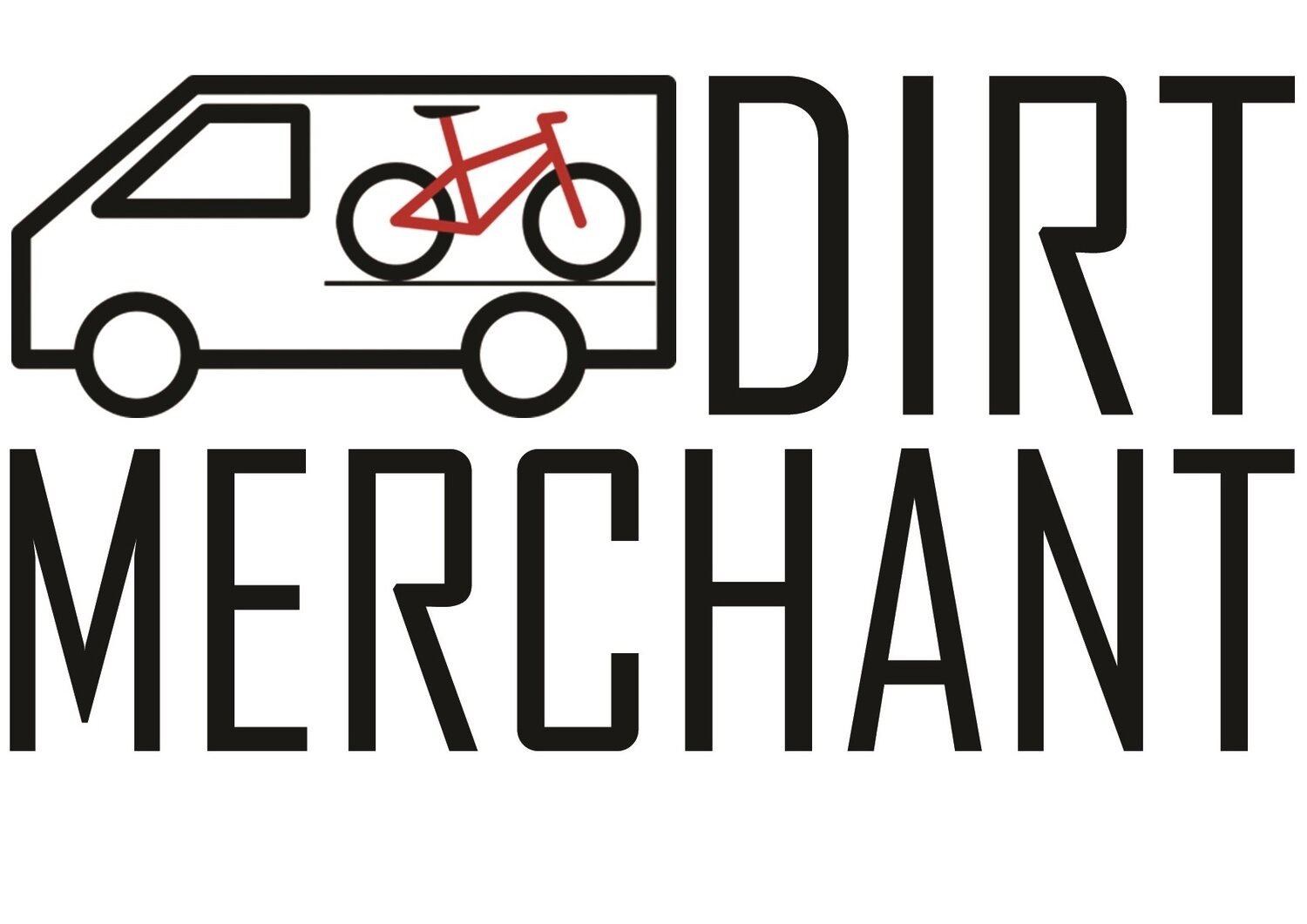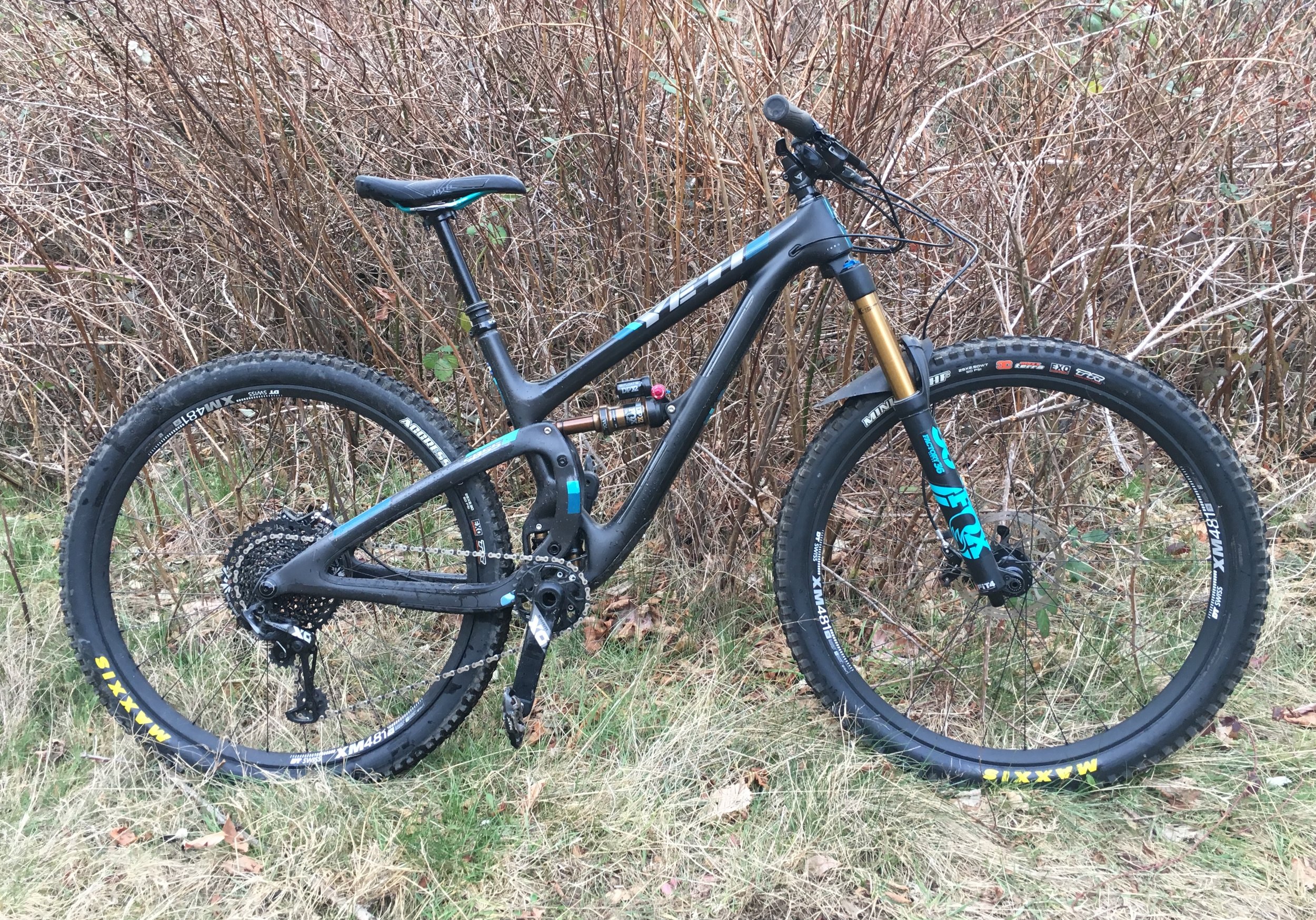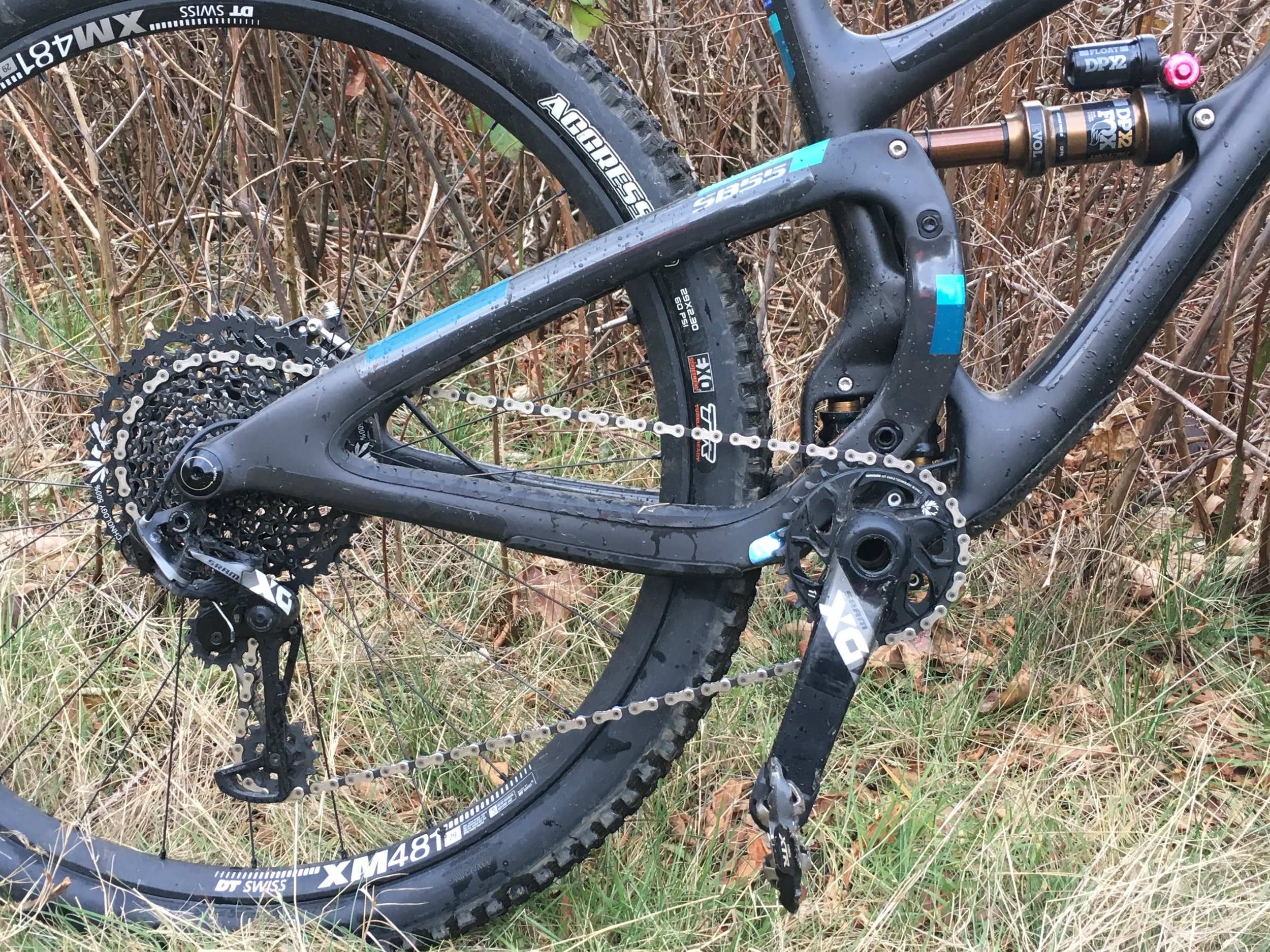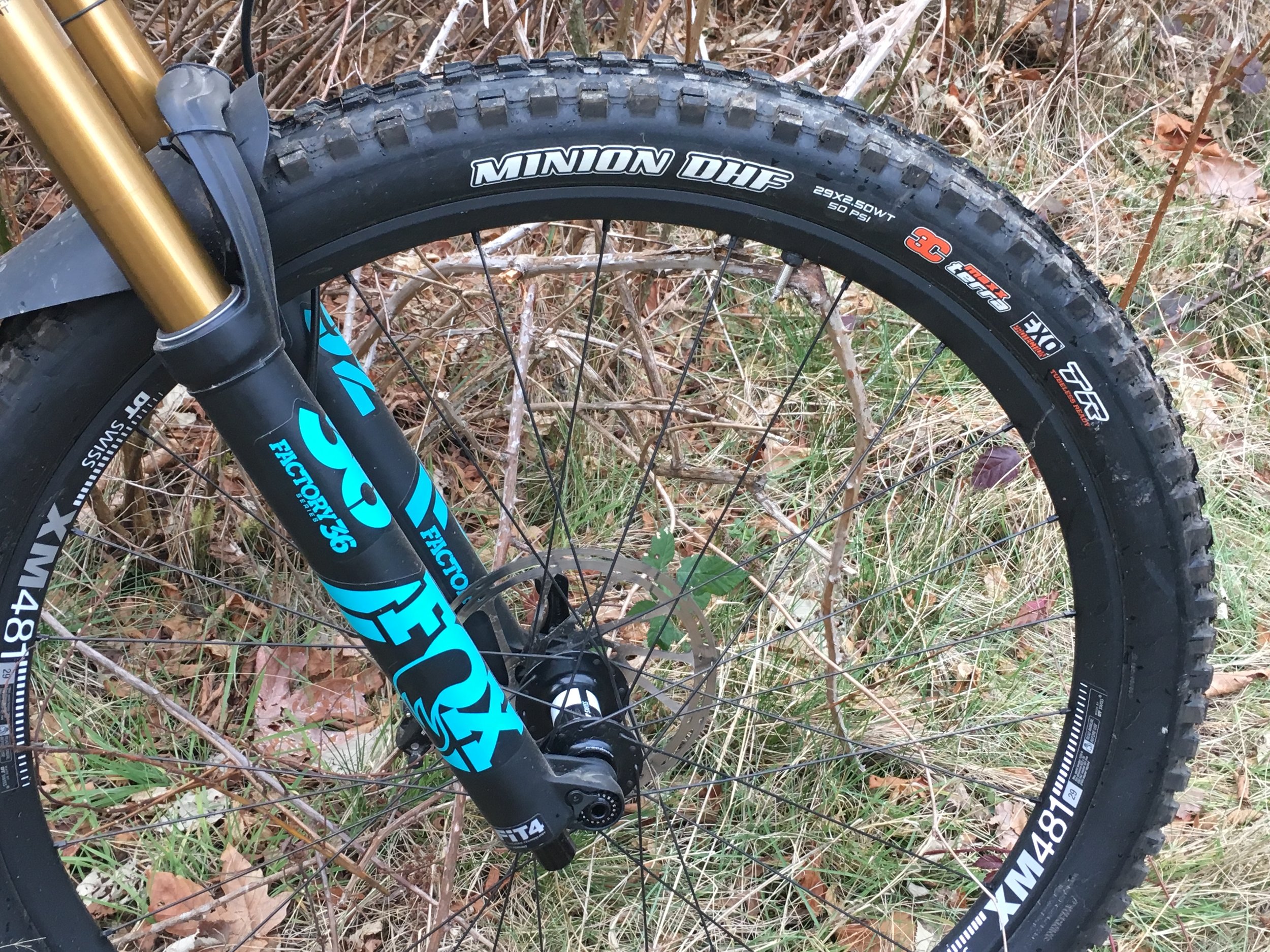The SB5.5 is one of the best bikes that I've ridden in the past several years balancing downhill stability with a nimble feel suited for trail riding on days when you're not just blasting downhill.
Background:
Being 5’9” (175cm) in height, I’m at the cusp of being just being tall enough for 29er geometry to work well. My experience is that the increased size of 29er wheels vs that of a 27.5” wheel for medium sized frames results in slacker and slower steering geometry. Though many 29er bikes climb well and have better stability going downhill than 27.5” wheeled bikes, the shortcoming from a perspective of my ride preferences is that many of them require extra effort to steer around even moderately tight corners than an equivalent 27.5” bike resulting in a less intuitive, flowy handling feel.
I tend to look for bikes that are well-suited for being one-quiver bikes. Generally, I feel that these bikes balance good downhill ability with decent level of nimbleness for everyday trail riding along with good climbing efficiency and feel. Some bikes optimize for one or two of these factors and do make sense for either for racers in gravity-oriented events or XC race events. Most non-racers though ride a variety of terrain for which they’ll need to climb to enjoy the descents and are often on trails that aren’t always pointed straight uphill or downhill. Bikes that are good at descending, climbing and nimble handling feel tend to be the one that are most suitable for being that one-quiver, do-it-all bike.
Climbing – 4 stars
The SB5.5 climbs well, if perhaps only missing the final iota of firmness at the pedal and efficiency that some dw-link bikes can provide. With its 29er wheels and Switch Infinity suspension, I had expected the SB5.5 to climb like a mountain goat. While it was a solid climber, the initial acceleration when applying pedal force was perhaps a bit less immediate than I would have expected. That said, once the 29er wheels were rolling, the SB5.5 felt like a locomotive in its ability to maintain speed on less steep climbs and flat terrain. One factor that might have impacted my impressions were that the Maxxis Aggressor rear tire on the SB5.5 demo bike I rode didn’t seem to roll all that well despite apparently being designed as faster rolling than the Maxxis Minion DH-R. If increasing climbing speed is of interest to you for the SB5.5, I might suggest running a Schwalbe Nobby Nic as a rear tire paired with the Maxxis Minion DH-F in front. If better cornering traction is more important, I would suggest running the DH-R that has better cornering traction while still rolling surprisingly well. See our 2016 enduro tire report for more details. (https://www.dirtmerchantbikes.com/special-events/2016/5/13/pacific-northwest-spring-2016-endurotrail-tire-test-hans-dampfnobby-nic-dh-fdh-r-butcherpurgatory). We’ll probably run a comparison test this year comparing the DH-R, Nobby Nic and Aggressor as rear tires, but based on my initial impressions, it doesn’t seem to make sense to run the Aggressor as a compromise between the DH-R with better cornering traction and the Nobby Nic with better rolling resistance and feel.
Descending - 5 stars
This is where the SB5.5 really was outstanding from a perspective of fit for everyday trail riding along with confidence when riding steeper terrain. Despite head angle and wheelbase numbers that are actually on the steeper & shorter side, the SB5.5’s 29er wheels provide a welcome degree of stability on steeper terrain. The roll over capability and perhaps the greater gyroscopic effect of the larger 29er wheels provides confidence that the SB5.5 goes where you point it. The steeper head tube angle & shorter wheelbase combined with the stability of the 29er wheels provides a somewhat uncommon combination of stability and nimbleness.
Cornering – 4.5 stars
Where I was really impressed by the SB5.5 was its cornering ability despite having 29er wheels. Though not quite as quick to turn as some bikes with 27.5” wheels, the SB5.5 handles fast enough to not feel like its slowing you down in tighter singletrack. This is generally the aspect that has turned me off to many 29er bikes especially those from earlier generations of 29er for which handing agility was not a primary design consideration. It was only on super tight switchback turns that are difficult to clean on any bike that the SB5.5 felt somewhat long. The SB5.5’s relatively nimble handling balance is what makes it highly suitable for a one-quiver bike that works well on a wide variety of terrain.
Geometry
I think the SB5.5 is able to balance downhill stability with nimble handling as Yeti has leveraged the roll over capabilities of 29er wheels to balance out slightly faster handling geometry. Here are specs for some long-travel 29ers so you can compare yourself.
Long travel 29er bikes - Geometry specs
Durability of the Switch Infinity suspension
Though Yeti’s Switch Infinity suspension design (https://youtu.be/E2J873o4skI) may seem complex, the mechanics at Yeti shops I’ve spoken with uniformly agree that it is a more durable design than Yeti’s previous Switch design (https://youtu.be/RXXfhbrng5o) with the rotating eccentric cam (https://www.pinkbike.com/news/Yetis-Chris-Conroy-Talks-About-the-SB-66-Suspension.html). Both designs work well in drier climates, but the rain and mud in the Pacific Northwest can cause contamination of the eccentric cam of the earlier Switch design. The newer Switch Infinity design is apparently easier to clean and maintain, holding up better in wet climates such as ours
Comparison to the SB6 (27.5” wheels)
Comparing the SB5.5 to the SB6 which I’ve also ridden on the same trails, I would pick the SB5.5 as my everyday bike. The SB6 has great stability, but felt sluggish to me on flatter and tighter trails. The SB5.5’s 29er wheels seem to provide almost the same level of stability as the SB6 with geometry that is steeper and faster steering. For enduro racing, I don’t have enough back-to-back riding experience on both to make a judgment, but would suggest riding both the SB6 and SB5.5 if you’re interested in getting a Yeti.
Summary
I really had a LOT of fun riding the SB5.5. It inspired confidence on steeper, looser trails while still feeling decently quick on tighter singletrack.
Rating Guide
5 stars - Absolutely outstanding
4 stars
3 stars - Solid performance, meets expectations
2 stars
1 star - Misses expectations by a wide margin



